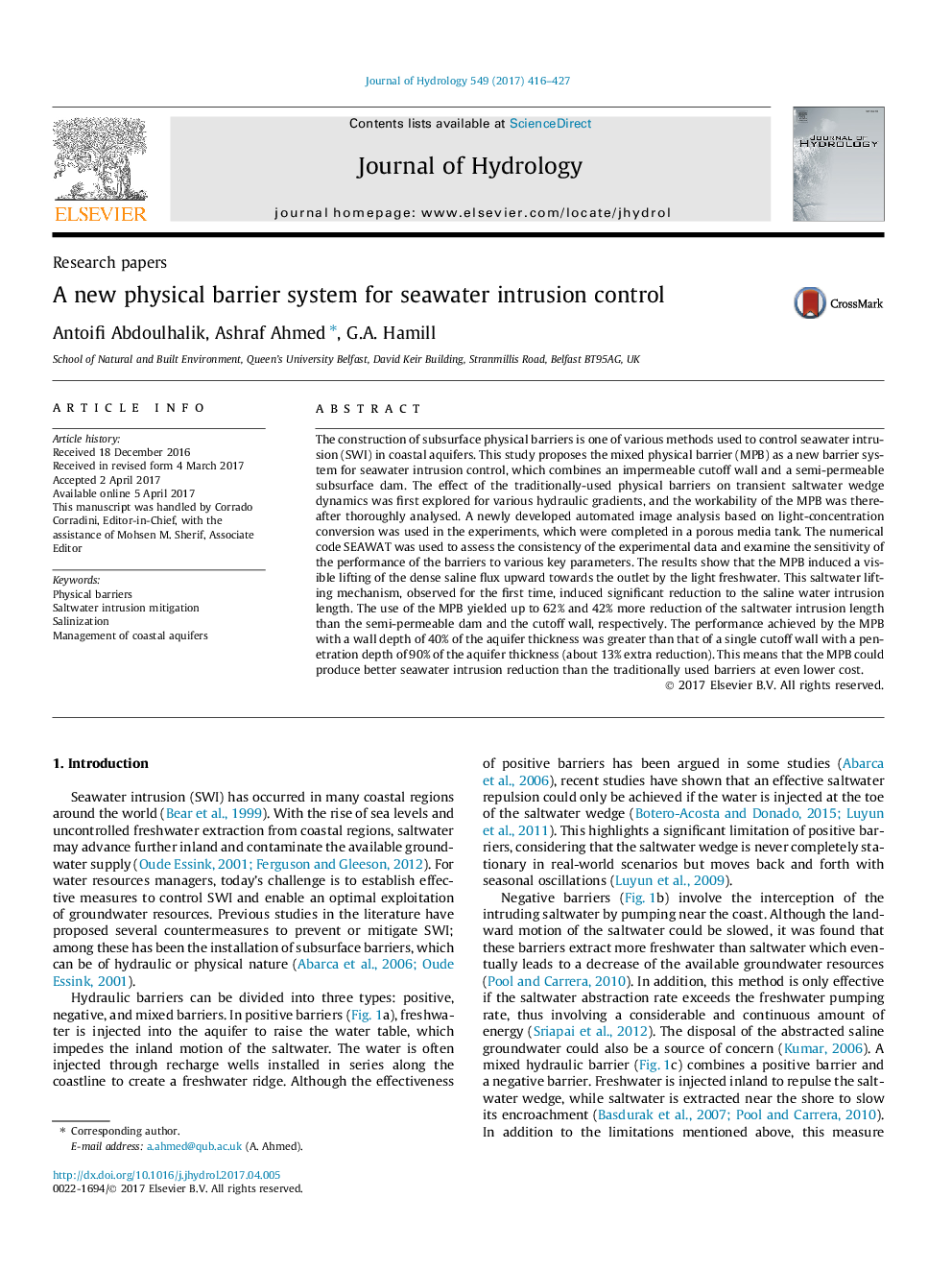| کد مقاله | کد نشریه | سال انتشار | مقاله انگلیسی | نسخه تمام متن |
|---|---|---|---|---|
| 5770994 | 1629905 | 2017 | 12 صفحه PDF | دانلود رایگان |

- We propose the mixed physical barrier (MPB) as a new barrier system for SWI control.
- The MPB achieved up to 62% more reduction of SWI than the traditionally used barriers.
- The MPB induced a visible saltwater lifting process, which affected the intrusion length.
- There could be a potential for cost saving by using the MPB system to control SWI.
The construction of subsurface physical barriers is one of various methods used to control seawater intrusion (SWI) in coastal aquifers. This study proposes the mixed physical barrier (MPB) as a new barrier system for seawater intrusion control, which combines an impermeable cutoff wall and a semi-permeable subsurface dam. The effect of the traditionally-used physical barriers on transient saltwater wedge dynamics was first explored for various hydraulic gradients, and the workability of the MPB was thereafter thoroughly analysed. A newly developed automated image analysis based on light-concentration conversion was used in the experiments, which were completed in a porous media tank. The numerical code SEAWAT was used to assess the consistency of the experimental data and examine the sensitivity of the performance of the barriers to various key parameters. The results show that the MPB induced a visible lifting of the dense saline flux upward towards the outlet by the light freshwater. This saltwater lifting mechanism, observed for the first time, induced significant reduction to the saline water intrusion length. The use of the MPB yielded up to 62% and 42% more reduction of the saltwater intrusion length than the semi-permeable dam and the cutoff wall, respectively. The performance achieved by the MPB with a wall depth of 40% of the aquifer thickness was greater than that of a single cutoff wall with a penetration depth of 90% of the aquifer thickness (about 13% extra reduction). This means that the MPB could produce better seawater intrusion reduction than the traditionally used barriers at even lower cost.
Journal: Journal of Hydrology - Volume 549, June 2017, Pages 416-427